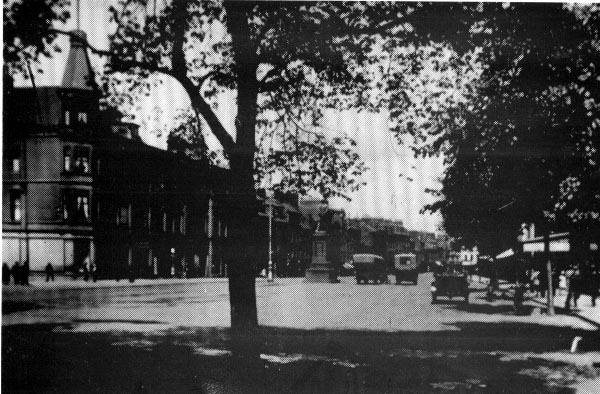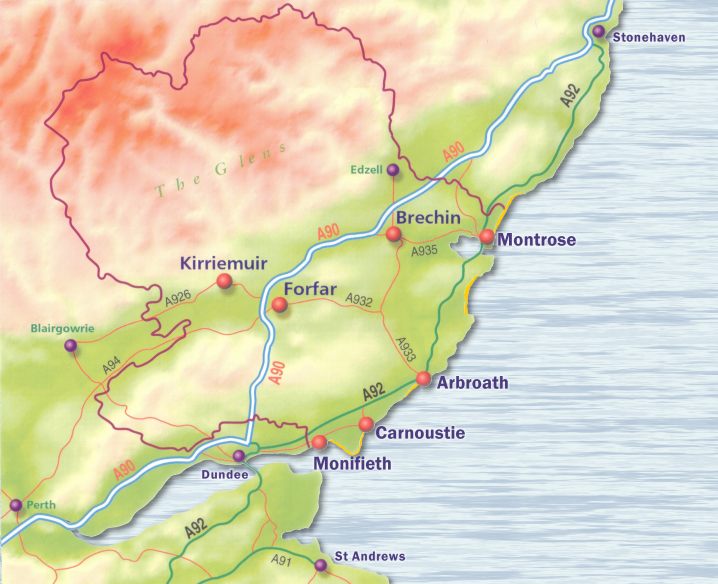
John Baxter Wighton, his wife Catherine, and his daughter Fanny lived in Montrose in the 1860s, 1870s, and 1880s. Another family member, Amy Louisa Hutcheon, was an acquaintance of Fanny and married her brother, John Murray Wighton. Amy's family were long time residents of Montrose - her family was in the shipping business.
Montrose is now a busy east coast town at the north-east side of the shire of Angus (formerly Forfarshire). Much of the town lies on a spit of sandy land a mile wide that extends southwards across the seaward side of the Montrose Basin, almost cutting this large tidal nature reserve off from the North Sea. Montrose's origins lie two miles to the west of today's town, on the west shores of Montrose Basin in Old Montrose. This probably served as the port for Brecin until a Viking raid in 980 largely wiped it out.
The replacement settlement was formed on the sandy spit where it has grown ever since. The north side of the River South Esk offered deep water whatever the state of the tide, and the town that grew here was given a Royal Charter by David I in the 1100s. By 1180 there was a royal castle at Montrose, and a ferry plied between the town and Ferryden on the south side of the River South Esk. The castle was destroyed by William Wallace in 1297 and no trace of it remains.
Montrose was the center of attention once again in late 1715 when the Jacobite forces made their retreat from Perth. Previous arrangement had been made for James to escape to France from here and so while the main body of the army made a night march to Aberdeen, James remained behind and made his escape. The house where he spent the day was the town house of the Duke of Montrose.
Some form of militia was garrisoned in Montrose from 1798 on. In 1833, they were known as the Forfar and Kinkardine Militia, but in 1854 they became an artillery unit (Forfar and Kinkardine Artillery). The army barracks were situated in Panmure Square (Lord Panmure was the Secretary of War during the Crimea War). Originally, they were the buildings of the lunatic asylum which were converted into a depot for the militia.
Below is a map of Angus which will give you a sense of Montrose's location in Angus.

Sources
Various websites.